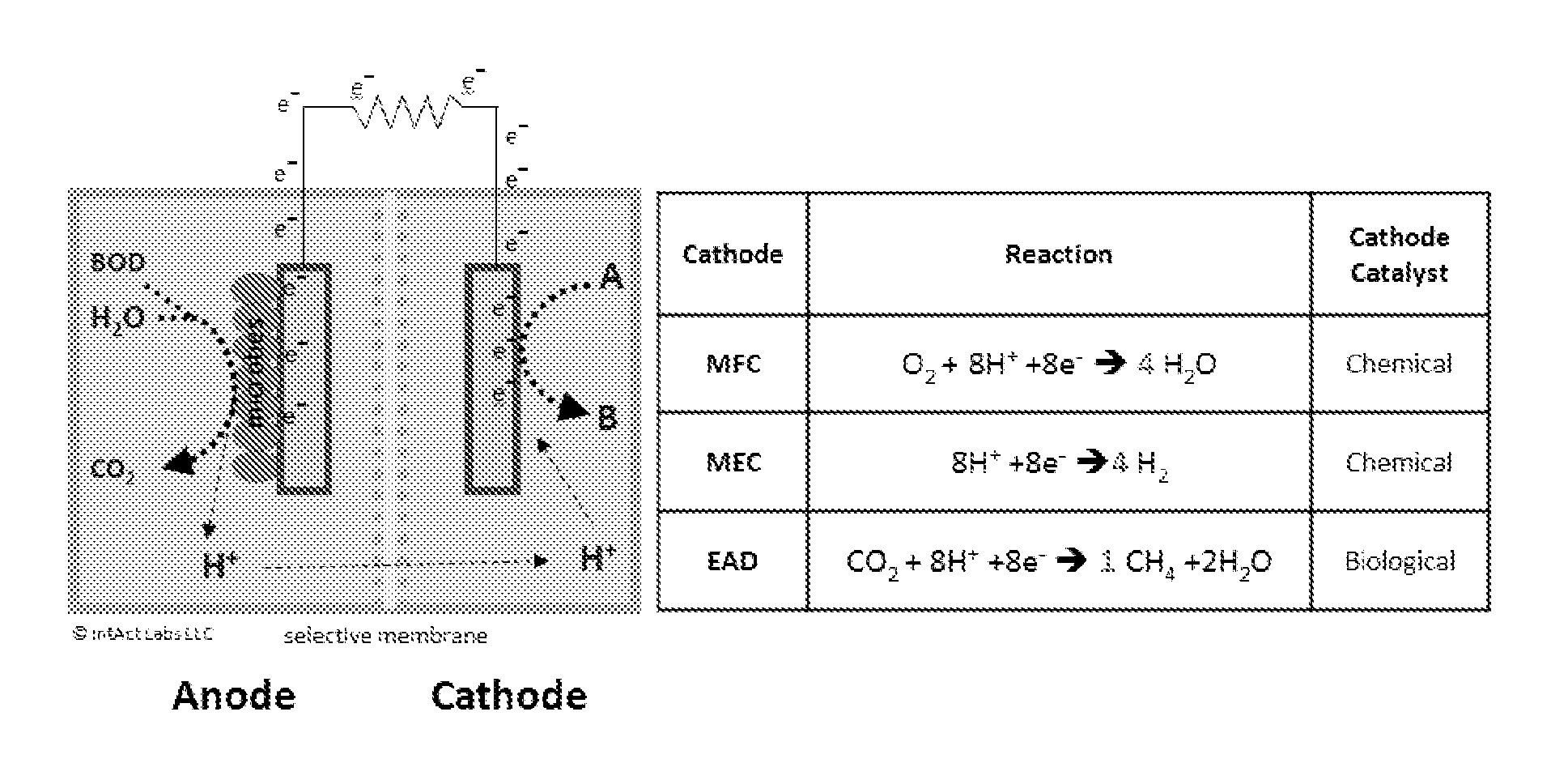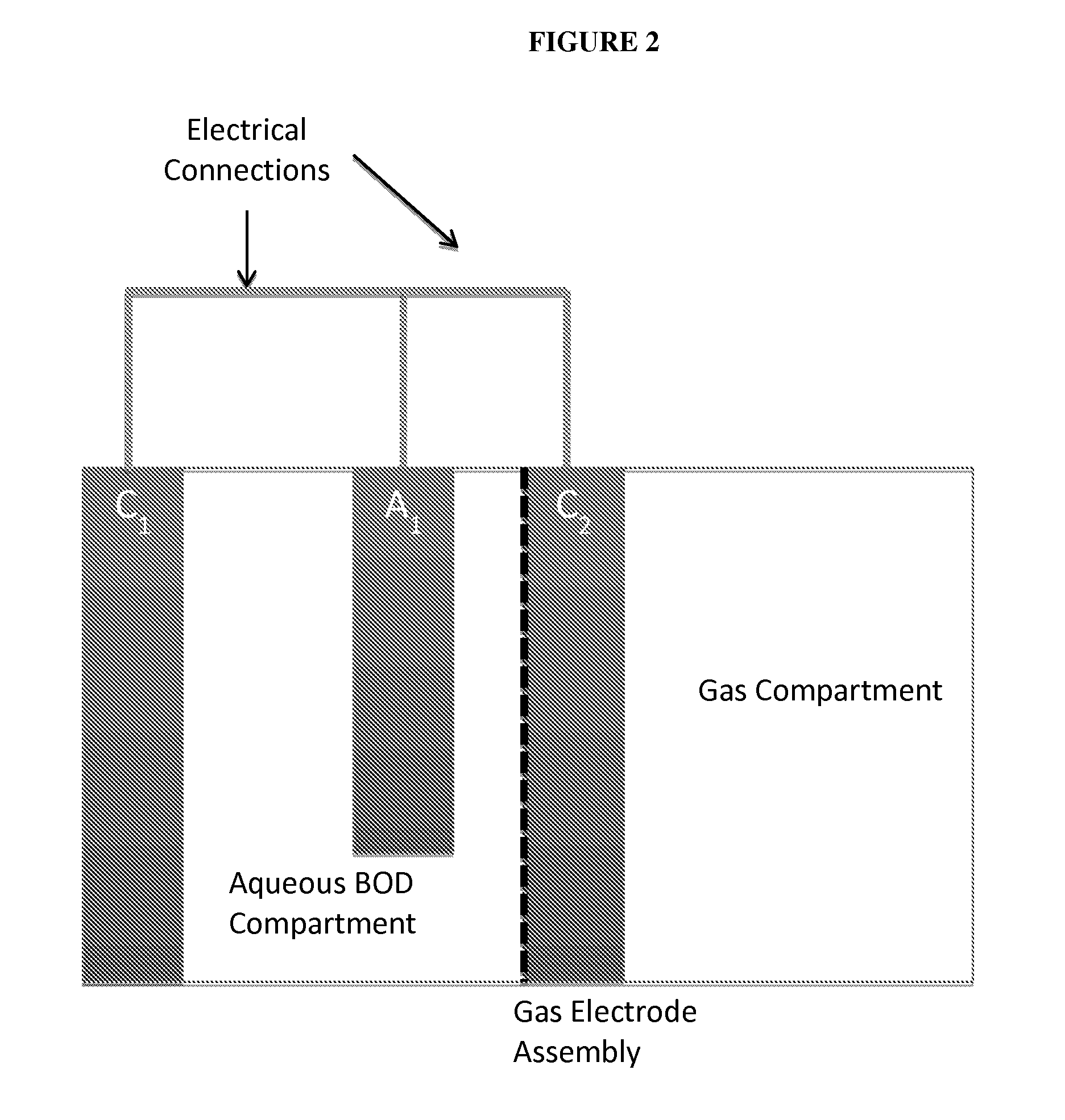Bio-electrochemical systems
- Summary
- Abstract
- Description
- Claims
- Application Information
AI Technical Summary
Benefits of technology
Problems solved by technology
Method used
Image
Examples
example 1
1.1 Example 1
Three-Phase Separation in Microgravity—Embodiment 1
[0059]In the one configuration of the invention optimized for space-based life-support applications, a system architecture is used that can effectively separate solids, liquids and gases in a microgravity environment. In this embodiment the anode chamber and / or cathode chamber are rotated to ensure effective separation of solids, liquids and gases. In one embodiment, the anode is disk-shaped and housed in a cassette that can rotate around a central axle (FIGS. 6A and 6D). In certain embodiments, the cassette includes more than one anode (FIG. 6E). In one embodiment the sides of the anode cassette are comprised of a chemical cathode with the electrodes exposed to the outside of the cassettes. In this embodiment the entire cassette is itself disposed in a larger compartment that can rotate separately from the anode cassette and in the same or different directions (e.g. the cathode compartment). In this embodiment one or m...
example 2
1.2 Example 2
Three-Phase Separation in Microgravity—Embodiment 2
[0061]In another configuration of optimized for microgravity, a BES cell or cells containing a bio-anode and two cathodes contained in disc shaped cassettes rotating around a central axle, will be housed in a series of individually controlled cathode chambers (FIG. 6B).
1.3 Example 3
Detailed Design Considerations
[0062]Provided below are some more detailed aspects of the multi-output BES design, particularly as they apply to the microgravity environment. Process requirements to consider during this period are treatment rates, liquid flows, expected gas production, current consumption / production, and solids buildup. Designing a system addressing these process requirements will ensure proper sizing of the reactor and minimize any disruption to downstream systems in future. The design of support systems such as solids filtration and gas separation will be addressed.
BES Cell / Cassette
[0063]The system can consist of a cassette ...
example 3
1.4 Example 3
Multi-Output Bio-Electrochemical System (MOBE)
[0079]In one aspect, the present invention provides a novel electrode configuration and different chambers for treatment, described herein as a multi-output bio-electrochemical system (MOBE), which is able to switch between the production of multiple valuable by-products, including electricity, hydrogen, methane and purified water, depending on the needs of the situation in which it is being used.
[0080]In certain embodiments the multi-output bio-electrochemical cell will include at least one cathode and at least one anode. In some embodiments it will include one anode and two cathodes, with the anode located between the cathodes. The cathode or cathodes may be housed in an enclosed structure within the chamber. Voltage may be applied to the cathode in order to produce hydrogen. In the same embodiment, oxygen may be allowed into the cathode enclosure to produce electricity.
[0081]In certain aspects, the present invention provi...
PUM
| Property | Measurement | Unit |
|---|---|---|
| Electric potential / voltage | aaaaa | aaaaa |
| Electric potential / voltage | aaaaa | aaaaa |
| Efficiency | aaaaa | aaaaa |
Abstract
Description
Claims
Application Information
 Login to View More
Login to View More - R&D
- Intellectual Property
- Life Sciences
- Materials
- Tech Scout
- Unparalleled Data Quality
- Higher Quality Content
- 60% Fewer Hallucinations
Browse by: Latest US Patents, China's latest patents, Technical Efficacy Thesaurus, Application Domain, Technology Topic, Popular Technical Reports.
© 2025 PatSnap. All rights reserved.Legal|Privacy policy|Modern Slavery Act Transparency Statement|Sitemap|About US| Contact US: help@patsnap.com



